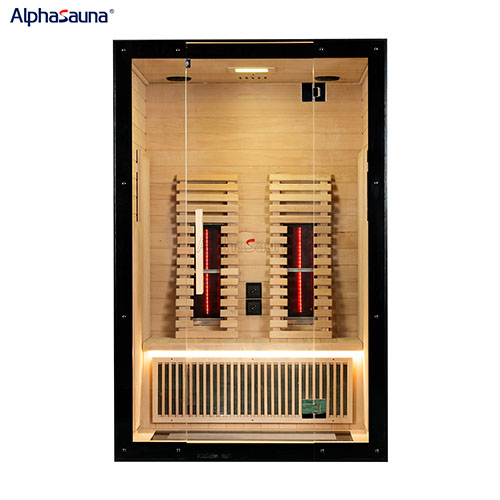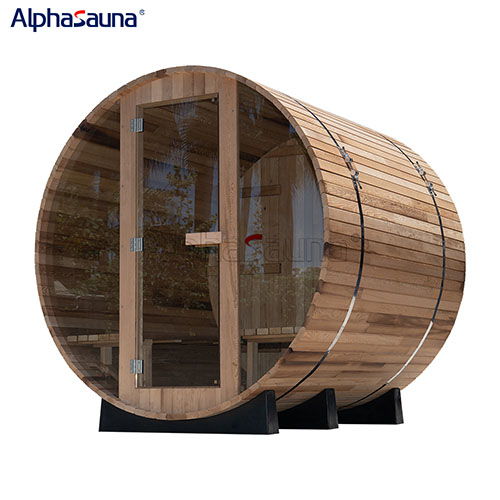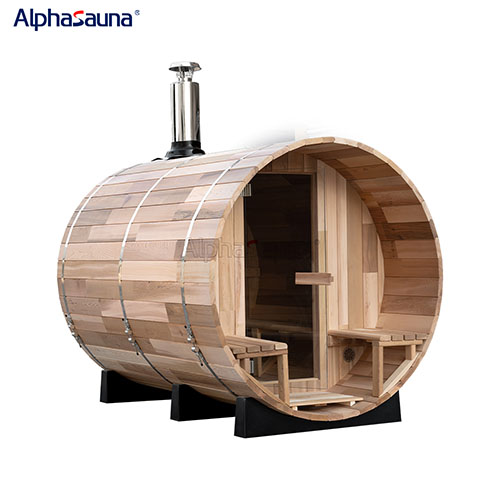The popularity of sauna and daily aerobic exercise can bring us various health benefits, but the effects of the two are completely different. For example, aerobic exercise can make your heart beat faster, enhance endurance, improve metabolism, etc., while you only need to stay in the sauna for a while without any extra movements to increase your heart rate, relax your body and mind, and improve your sleep quality, etc. Next, Alphasauna suppliers will take you to unveil the mystery of the two.

How is aerobics defined, and what are its common types?
Aerobic exercise refers to prolonged, low-intensity physical activity that allows the body to utilize sufficient oxygen. Through continuous, full-body movement, aerobic exercise can improve cardiovascular function, enhance endurance, and boost metabolic rate. It is particularly suitable for beginners and those looking for a gentle form of exercise, whereas high-intensity training is typically better suited for experienced athletes.
In daily life, common types of aerobic exercise include the following:
Running: One of the simplest and most effective aerobic exercises, running can be done by both adults and children anytime, anywhere. With long-term commitment, it offers significant benefits for cardiovascular health and endurance.
Swimming: This full-body exercise engages multiple muscle groups and is suitable for all ages, especially in hot summer weather. Swimming not only cools you down but also improves cardiopulmonary function. It’s also a great social activity.
Cycling: Cycling strengthens the lower limbs and cardiovascular system with less impact on the joints compared to running. It’s also an effective way to burn fat.
Aerobics: Aerobics involves a series of rhythmic movements performed to music. It is excellent for burning fat, shaping the body, and improving cardiovascular endurance.
Skipping: Skipping, unlike other aerobic exercises, is a high-intensity activity that enhances agility, coordination, and cardiovascular health.
Walking: A low-impact aerobic exercise, walking is ideal for beginners and helps with digestion after meals. It’s especially beneficial for the elderly.
What is the definition of a sauna, and what are the different types sauna?
Definition and Types of Saunas
A sauna is a form of thermal therapy with a long history, traditionally used to induce sweating through exposure to high temperatures. Originating in Finland, saunas have gained popularity worldwide. They are typically enclosed spaces made of natural wood, heated by a specific system to create a high-temperature environment.
Over time, saunas have evolved into several different types:
Traditional Finnish Sauna: This sauna heats the room using wood-burning stoves, heated stones, or electric heaters. It often reaches higher temperatures and offers a more natural, traditional experience.
Infrared Sauna: Using infrared technology, this sauna directly heats the body rather than the surrounding air. It operates at lower temperatures and is generally suitable for everyone.
Steam Sauna: Also known as a wet sauna, this type uses steam generated by a steam generator to heat the room. With humidity levels between 80% and 100%, it may not be ideal for those who dislike high humidity.
Sauna Blanket: This portable option uses infrared heat to provide health benefits. While convenient, it offers less space and impact compared to traditional infrared saunas.
What are the differences between the benefits of a sauna and aerobics?
From the above analysis, we’ve gained an understanding of the definitions and types of saunas and aerobic exercise. Now, let’s explore the health benefits each brings to the body.
Aerobics
Cardiovascular Health: Regular aerobic exercise can significantly reduce the risk of cardiovascular disease, especially for overweight or obese individuals. It is highly effective in lowering blood pressure, improving heart and lung function, and promoting blood circulation.
Weight Management: Aerobic exercise aids in weight loss or maintenance by burning more calories and boosting metabolism, making it more effective in this regard compared to saunas.
Improved Mood: Aerobic exercise increases the secretion of endorphins, helping to reduce anxiety, depression, and stress. This release of negative emotions fosters a more positive mindset.
Enhanced Endurance and Physical Strength: Exercise puts stress on the body, and regular aerobic activity builds endurance and strengthens the muscles and cardiovascular system, while also improving mental clarity.
Boosted Metabolism: Aerobic exercise raises the body’s basal metabolic rate, accelerates energy consumption, maintains healthy blood sugar levels, and reduces the risk of type 2 diabetes.
Improved Muscle Tone and Joint Health: While aerobic exercise is not as focused on muscle building as strength training, it still improves muscle endurance and joint flexibility, reducing muscle soreness and stiffness.
Sauna
Although a sauna is not a full-body workout like aerobics, the high-temperature environment mimics the effects of exercise by stressing the body and increasing heart rate. Some of the key benefits of saunas include:
Detoxification: The high heat in a sauna promotes sweating, which helps eliminate toxins from the body, reducing the strain on the kidneys by assisting in detoxification through the skin.
Muscle Recovery: The heat stimulates blood vessel expansion, enhancing blood flow and delivering more oxygen and nutrients to various parts of the body. This accelerates muscle recovery, particularly when used after exercise.
Improved Skin Health: Saunas can improve skin elasticity and appearance by clearing out dirt and bacteria from the pores.
Boosted Immunity: Regular sauna sessions can strengthen the immune system, making the body more resistant to illness.
Better Sleep: Saunas help the body relax and relieve psychological stress, making it easier to achieve deeper and more restful sleep.
Mental Health: Saunas reduce cortisol levels, which can improve mood and contribute to better overall mental health.

How should I decide between the two?
Both saunas and aerobic exercise offer distinct health benefits. If you’re unsure which one is right for you, Alphasauna recommends combining the two for even greater results. After aerobic exercise, your body may feel tired and your muscles sore. A sauna session can help alleviate these issues, further strengthening cardiovascular function while also relaxing tense nerves.
Of course, you can also decide based on your lifestyle. If you have ample time, the combination of both is ideal. However, if your time is limited, such as when commuting to and from work, I suggest opting for a sauna session. This can help relieve fatigue from the day, allowing you to relax, meditate, and clear your mind more effectively.
Additionally, you could consider a routine of two sauna sessions and two aerobic workouts per week. No matter which option you choose, both will benefit your health. The key is to stay consistent and complete all activities regularly.









